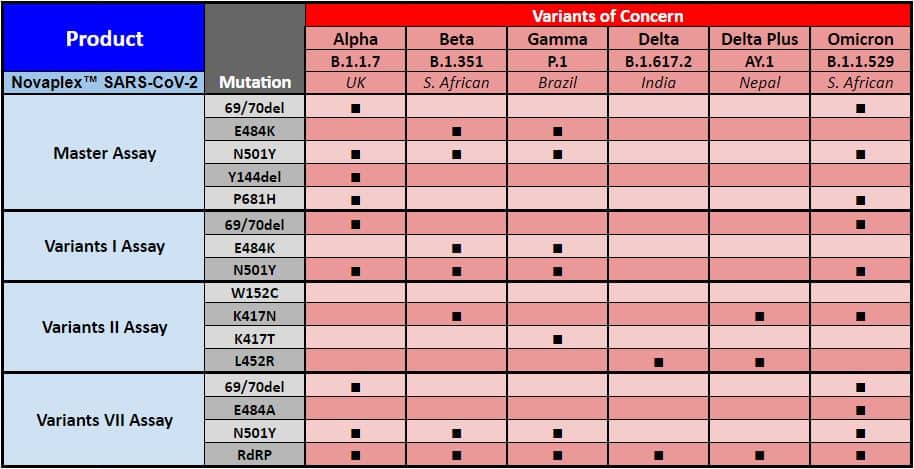The Omicron Variant: What We Know So Far

On Friday, November 26, the Omicron variant of SARS-CoV-2, the agent behind COVID-19 was classified as a variant of concern by the World Health Organization (WHO) after reports of its detection and genetic sequence were released from South Africa.
A variant of concern is a viral variant that is considered more contagious, more virulent, or better skilled at evading the protection offered by vaccines or public health measures. Undoubtedly, this has caused panic around the globe as countries continue to grapple with a pandemic that is stretching into its third year. The first case of the Omicron variant in the United States was reported in a person from California on December 1, 2021, who had recently returned from South Africa. According to a report in STAT News, the individual had mild symptoms and has already recovered. So far, countries including Israel, Japan, and Morocco have banned the entry of foreign travelers until further notice. Other countries including the U.S., have banned travelers from several southern African countries.
Why is Omicron Important?
The Omicron variant contains more than 30 mutations that are related to the spike protein. The spike protein allows SARS-CoV-2 to enter host cells by binding to angiotensin-converting enzyme 2 (ACE2) on the surface of cells. Apart from these spike protein mutations, the new variant has 50 new mutations in all.
The unusually high number of mutations has experts worried that Omicron might be challenging to control with current vaccines and therapies. However, officials in South Africa have so far stated that individuals affected with the Omicron variant only exhibit mild symptoms. This report has been met with some concern that most of the individuals who have tested positive for the Omicron variant are younger people who statistically tend to have milder COVID-19 symptoms. Scientists and public health officials are still working hard to fully understand the variant’s mechanism of disease and its impact on the COVID-19 pandemic.
How Does the Variant Match up Against Current Therapies?
Since the announcement of the discovery of Omicron, several pharmaceutical companies have released official statements regarding the efficacies of current therapies against the variant.
On November 30, Regeneron, the manufacturer of an antibody treatment against COVID-19 stated in a release that their treatment may have reduced neutralizing action against the viral variant due to the number and type of mutations present in Omicron.
While this information is preliminary, manufacturers of the most successful COVID-19 vaccines to date, Pfizer, Moderna, Johnson & Johnson and AstraZeneca, have said they are testing Omicron-specific vaccines since the current vaccines may not provide the required protection against the new variant.
If studies show that the current vaccines are ineffective at protecting people from the Omicron variant, the next hurdle for these companies is to get the vaccines through the clinical trial process, approved, and manufactured at scale.
Realistically, this entire process may take until the summer or fall of 2022 to happen.
In the U.S., the Centers for Disease Control and Prevention (CDC) is now recommending that people 18 years and older get a booster shot against SARS-CoV-2. Individuals are eligible for a booster after six months of receiving their second dose of the Pfizer and Moderna vaccines or two months after receiving the Johnson & Johnson vaccine.
What Can Individuals Do to Prevent the Spread of Omicron and Other Variants?
The situation with the Omicron variant is rapidly evolving. However, if the last two years have taught us anything, it is that while no one way of preventing the spread of the virus is perfect, handwashing, social distancing, wearing masks, and vaccinations are a powerful combination when it comes to combating the spread of the virus regardless of the variant.
For up to date information on SARS-CoV-2 variants, visit the CDC website: COVID-19- What You Need to Know About Variants
For laboratories that want to study Omicron, Seegene has developed a series of Research Use Only (RUO) assays to identify some mutations consistent with Omicron and differentiate between Omicron and other variants such as the Delta variants.
Seegene’s latest Novaplex™ SARS-CoV-2 Variants VII Assay (Research Use Only) is designed to detect mutations consistent with the Omicron variant, its Stealth version, and all the Variants of Concern (VOCs) in a single tube: 69/70del, E484A, N501Y, RdRP.
For more information, visit: Novaplex™ SARS-CoV-2 Variants Assays
Press Release on Novaplex™ SARS-CoV-2 Variants VII Assay: Press Release

Contact Seegene Technologies:
For any inquiries, please contact us by clicking this link
Other Blog Posts
Take a look at our other blog posts here: Seegene Technologies Blog Posts
